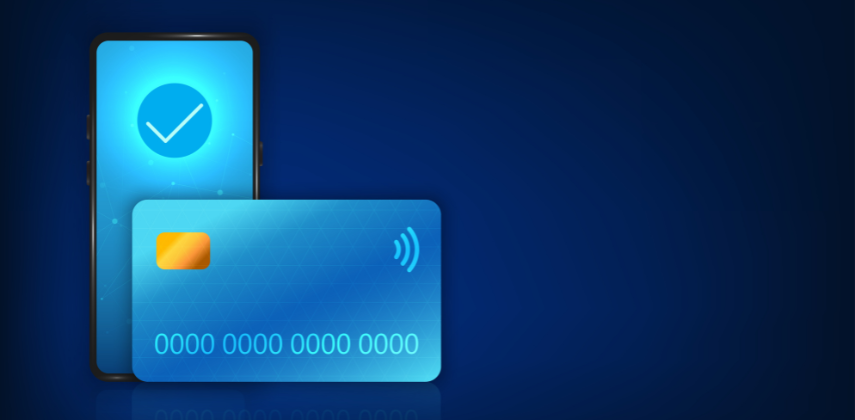





In today's digital world, online payments have become a regular part of our lives. With this, concerns around online privacy and fraud are rising, too. A virtual credit card offers a more innovative, safer way to transact online.
A virtual credit card is a digital version of a traditional credit card. You can use it for online purchases, subscriptions, or even international payments without ever exposing your actual card details. Thanks to its security, ease of use, and privacy benefits, its popularity is growing rapidly.

A virtual credit card is a temporary, digitally-generated card number linked to your real bank account or credit card. It's designed exclusively for online transactions.
Unlike a physical card you can touch and carry in your wallet, a virtual credit card exists only online. It comes with a unique card number, CVV, and expiration date, just like a physical card — but it's all digital.
So what's the difference?
With a physical card, you're using the same number every time. If it gets stolen or copied, you're at serious risk. However, a virtual credit card can be created for one-time use or a limited time, adding an extra layer of protection.
When you generate a virtual credit card, your bank or card provider creates a temporary card number, CVV, and expiry date. You use this digital card just like any physical card to pay online without putting your real card at risk.
There are typically two types:
One-time virtual credit cards: These are valid for a single transaction and become inactive once used. They are perfect for secure shopping on unknown sites.
Reusable virtual credit cards: These can be used multiple times within a set validity period. They are ideal for subscriptions or recurring payments.
This system keeps your real card details hidden, and even if hackers try to access your virtual card, they'll get valuable nothing after it expires.

Since a virtual credit card is temporary and digitally controlled, it offers an extra layer of security. Even if your virtual card number gets leaked, it won't harm your main account.
With virtual credit cards, your real credit card number is never exposed. Even if the site you used has a data breach, your actual card is still safe.
Many virtual credit cards let you set spending limits. This is great for managing expenses, preventing overspending, and assigning budgets for team members or kids.
Your personal data stays private because you don't have to share your real card information. Thus, you can shop online without worrying about identity theft or unauthorized charges.

Whether on Amazon, AliExpress, or local eCommerce platforms, virtual credit cards work smoothly for all online purchases.
Want to try a free trial on Netflix or Spotify without using your main card? Use a one-time virtual credit card. You can enjoy the service without worrying about automatic charges after the trial.

If you plan to use a virtual credit card, choosing a reliable provider is essential. Below are some top-rated global and local services offering high-quality virtual cards.
VirtualCardPalace.com is one of the most trusted sources for purchasing virtual credit cards quickly and securely. You can buy one-time or reusable cards for international use, subscriptions, or ad payments.
Features:
Easy to purchase via crypto or other payment methods
Instant delivery
Available in USD, EUR, and other major currencies
Affordable pricing for freelancers and businesses
This US-based company allows users to generate virtual cards for online payments. This is great for recurring payments and budget control.
Features:
Spending limits
Merchant locking
Works with any US debit card
Revolut offers virtual credit cards with its premium account, ideal for frequent travellers and digital users.
Features:
Auto-destroying cards
Global usage
Secure in-app controls
Known for international payments, Wise offers virtual debit cards linked to multi-currency accounts.
Features:
Low exchange rates
Useful for global freelancers
Works well with PayPal and Stripe

Freelancers, especially those working internationally, often face challenges in receiving payments, managing subscriptions, and paying for tools.
Here's how a virtual credit card can help:
Many platforms like Fiverr, Upwork, and Payoneer allow earnings withdrawal, but paying for tools like Canva, Grammarly, or even domain hosting can be tricky without a real card. Virtual cards solve that.
Example use case:
"As a freelancer from Bangladesh, I get paid via Payoneer. I use a virtual credit card to pay for my monthly Canva Pro subscription. It saves me from banking hassles."
Instead of using your personal card, create virtual cards for:
Design tools
SEO tools
Marketing automation software
Cloud storage (Google Drive, Dropbox)
This separates personal and professional expenses — making tax filing easier.
Hackers often target freelancers' payment sources. Using a virtual credit card for online tools ensures your main bank account remains untouched in Case of fraud.

Startups, remote agencies, and even eCommerce stores can benefit from using virtual credit cards.
With services like Brex or Virtual Card Palace, businesses can issue unique cards to team members. This helps in:
Tracking expenses
Setting limits
Preventing unauthorized purchases
Let's say you run a Shopify store and run Facebook ads. You can generate a virtual card for each ad account. Your main payment card stays safe if one account gets flagged or restricted.
By having virtual cards for each platform (e.g., Google Ads, Meta Ads, Shopify, Canva), you can:
Easily monitor ad spend
Detect overspending
Control budgets without micromanaging

Even if you're from a country with limited traditional credit cards, getting a virtual credit card is easier than ever.
Choose a Provider:
Go for trusted providers like VirtualCardPalace.com that accept local payments or crypto.
Register or Place Order:
Fill out basic details like email, type of card needed, and how much balance you want.
Make Payment:
Use bKash, Rocket, Payoneer, Wise, or even crypto.
Receive Your Virtual Card:
You'll get your card number, CVV, and expiry within minutes.
Use for Transactions:
Use it like any international card for Netflix, Spotify, Amazon, or Meta Ads.

Always check card limits.
Avoid shady providers
Never share your card details with anyone.
Though virtual credit cards are primarily beneficial, there are a few limitations to be aware of:
You can't swipe or tap these cards in physical stores — they're meant only for online use.
Solution: Use them strictly for online shopping, subscriptions, and payments.
These cards don't support ATM withdrawals or cash-out features.
Solution: Use services like Payoneer, Wise, or local agents to handle your withdrawals separately.
One-time cards expire quickly, and some services may block your subscription if the card expires.
Solution: Use reusable virtual cards for recurring payments.

Q: Is a virtual credit card safe?
Yes, it's one of the safest ways to pay online. Your real money stays protected since it's not linked directly to your bank account.
Q: Can I use a virtual credit card for Facebook or Google ads?
Absolutely. Many digital marketers use virtual cards to run campaigns while avoiding account bans and payment blocks.
Q: Can I use it for Netflix and Spotify trials?
Yes. One-time virtual credit cards are perfect for signing up for free trials without getting charged afterwards.
Q: What currencies are available?
Usually USD, EUR, or GBP, depending on your provider.
Q: Can I add a virtual card to PayPal or Stripe?
In most cases, yes. Just ensure the card supports international transactions.
